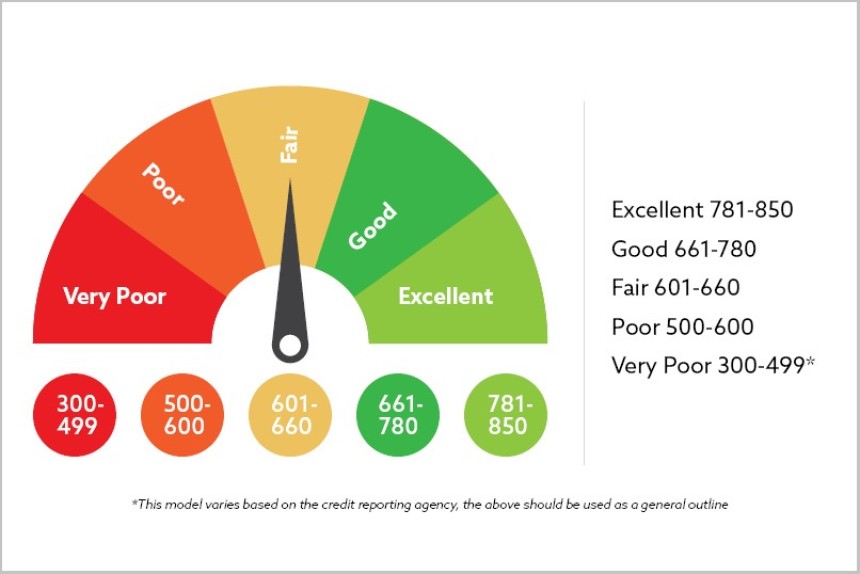
What Credit Card Approves A 500 Score?
There are both secured and unsecured credit cards that accept individuals with a 500 score. Learn more about the application process for instant approval.
Credit Cards for a 500 Credit ScoreHaving a credit score of 500 generally falls into the "poor" credit category. However, this doesn’t mean you’re entirely out of options when it comes to securing a credit card. While your choices may be limited and come with higher costs, there are still credit cards available for individuals with a 500-credit score. Here’s a comprehensive guide to help you navigate the options.
Understanding Your Credit ScoreCredit scores typically range from 300 to 850, with different ranges indicating various creditworthiness levels:
- 300–579: Poor
- 580–669: Fair
- 670–739: Good
- 740–799: Very Good
- 800–850: Excellent
A score of 500 falls into the "poor" category, which often means higher interest rates, fewer rewards, and a greater likelihood of requiring a security deposit to obtain a credit card.
Types of Credit Cards for a 500 Credit Score- Secured Credit Cards
- Secured credit cards are specifically designed for individuals with poor credit. These cards require a cash deposit that serves as your credit limit. The deposit reduces the risk for the issuer, making approval more accessible.
- Examples:
- Capital One Secured Mastercard: Offers a low minimum deposit and reports to the major credit bureaus. There is a potential to increase your credit limit after making your first five monthly payments on time.
- Discover it® Secured Credit Card: Requires a refundable security deposit and offers cash back on purchases. This card also provides access to your FICO credit score and potential for transitioning to an unsecured card.
- Unsecured Credit Cards for Bad Credit
- These cards do not require a security deposit but often come with higher fees and interest rates. They may be easier to obtain than other unsecured cards due to the lower risk involved compared to secured options.
- Examples:
- Credit One Bank® Platinum Visa®: Designed for those with less-than-perfect credit, it offers some cash back on purchases. Note that there are annual fees, which can vary based on your creditworthiness.
- First Access Visa® Card: This card is designed for individuals with poor credit and reports to the major credit bureaus. It’s important to review the terms carefully, as fees and interest rates can be high.
- Store Credit Cards
- Retail store credit cards are often easier to obtain than general credit cards. These cards can only be used at specific stores or their affiliates, but they may offer rewards and discounts for frequent shoppers.
- Examples:
- Target REDcard: Offers a discount on purchases at Target stores and online. While not available for everyone with poor credit, it’s an option worth exploring.
- Macy's Store Card: Provides discounts and rewards for Macy’s purchases. It’s typically easier to qualify for compared to general credit cards.
- Interest Rates and Fees
- Cards for individuals with poor credit typically come with high APRs (Annual Percentage Rates) and fees. It’s crucial to understand these costs and how they might impact your finances.
- Credit Reporting
- Choose a card that reports to the major credit bureaus (Experian, Equifax, and TransUnion). Responsible use of your credit card will help build your credit history and potentially improve your credit score.
- Annual Fees
- Many cards for poor credit have annual fees. Compare these fees across different cards to ensure you choose the most cost-effective option.
- Credit Limit
- Secured cards require a deposit that usually determines your credit limit. Unsecured cards may have lower limits but typically don’t require an upfront deposit.
- Rewards and Benefits
- While rewards and benefits might be limited with poor credit cards, some cards still offer perks such as cash back, discounts, or access to credit score monitoring.
- Timely Payments
- Always make at least the minimum payment by the due date. Late payments can significantly impact your credit score and result in additional fees.
- Credit Utilization
- Keep your credit utilization ratio low. This ratio is the amount of credit you're using compared to your credit limit. Aim to use less than 30% of your available credit.
- Monitoring Your Credit
- Regularly check your credit reports for errors or inaccuracies. Many credit card issuers offer free credit score access as part of their services.
- Gradual Credit Improvement
- Responsible use of your credit card over time can improve your credit score. As your score improves, you might qualify for better credit cards with more favorable terms.
While a credit score of 500 presents challenges, there are still credit card options available. Secured cards are often the most accessible choice, providing a way to build or rebuild your credit. Unsecured cards and store credit cards offer additional alternatives, though they may come with higher fees and interest rates.
Choosing the right card involves understanding the associated costs, the benefits offered, and how each option fits into your financial strategy. By managing your credit responsibly, you can gradually improve your score and move towards more favorable credit opportunities in the future.





